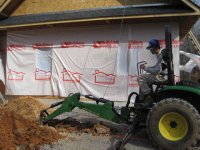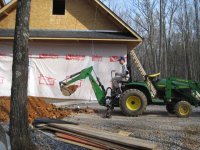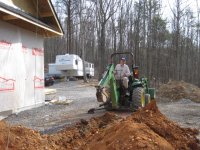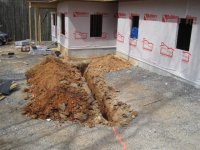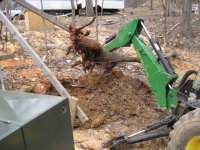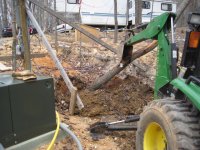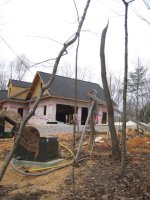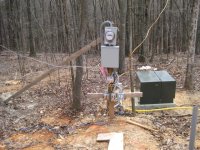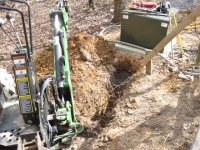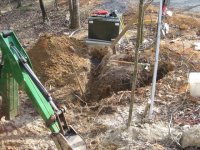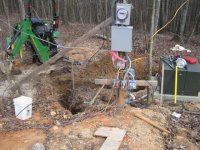No, No, No! Put the the water down at 4' and run the electric at 2 feet. I know you're in Tennessee, but if the frost ever goes below 2' and you have a water leak then you'll be kicking yourself. And fixing a water leak in a trench that shares electric and gas lines in winter- you DO NOT want to go there.
My master electrician stood here and told me to tell you that as we looked at your pics.
He also said: ask him why he needs 200 amps for just the basement? What are you going to be running that you'd even need 400amps to a residence?! Are you going to be launching space shuttles from your basement?!:laughing:
Here's what I'd do in your situation. Complete the 2' deep section from your poles or pad location where your electric will be feeding to the house. Then dig your 4 foot deep section for the water run. Lay in and pressure test the water run for possible leaks with compressed air. Once you know it does not have any leaks you can cross it with your electric line at 2' deep. Where your gas line crosses your water line set it in at 2', (or deeper, if required). Have your gas supplier do the testing so if there are any problems they are discovered BEFORE you bury the pipe. It needs to be sized properly to your appliances and intended usage. You may be required to use sand for the gas line trench as fill around and over the pipe- talk to your gas company first!
You must flag your gas line with special gas warning tape in the trench.
Take measurements off non-movable objects, like the corner of the house, to record exactly where everything crosses and runs for future reference. Hopefully, when everything is tested for leaks and hooked up you will never have to dig any of it up to correct or modify anything.
I was not so lucky. We had the gas company and the excavator and electrician do everything underground and after several weeks we started to smell gas. It turned out the fitting on top of the 1000 gallon BURIED propane tank was leaking!

The gas company had to come drain the tank completely and then BURN off the excess gas they could not remove from the underground tank. Fortunately I was in Maine skiing with my son and a friend of his- but I was keeping an eye out for any sudden fireballs in the sky!
The crew here said it was quite the site to roast pigs at if you could crane them into the sky to catch the flame!:confused2:
Post back with any questions. I've done all the trenching you could ever hope to see over the last 5 years or so. I had a pole with transformer above my pond, and from there my service is owned by the electric co. to my house where there is one 200amp service entry which connects to a 200 amp transfer switch that is controlled by a separate load control center that reads the status of electric supply, gas powered 20KW gas generator or utility power, and switches between whichever is active, while dropping high amp loads like hot tub, double oven and 2 other circuits, as needed and then latches them back on as power use permits. These controls feed 2, 30 breaker panels in the basement and one 20 amp panel in the addition. The 200amp supply then feeds 100 amps underground in two different directions; each of which is then connected to a 30 breaker panel. One is in the shed. The other is at the barn's mechanical/electrical room. From the barn's panel 50-70 amps is sent to the second floor to a 20 breaker panel.
It all works off one 200 amp service from the utility. I have water, gas, solar and electric in the various trenches, though not all have each item in each trench. Its like a small city! And it seems like it cost what it would to build one too!

But when the power goes out and its wicked cold out and the wind is blowing a 50mph or more I'm inside doing whatever I can do, with power on and gas for heat and cooking- so its GREAT! and worth the effort to get it done right the first time.
